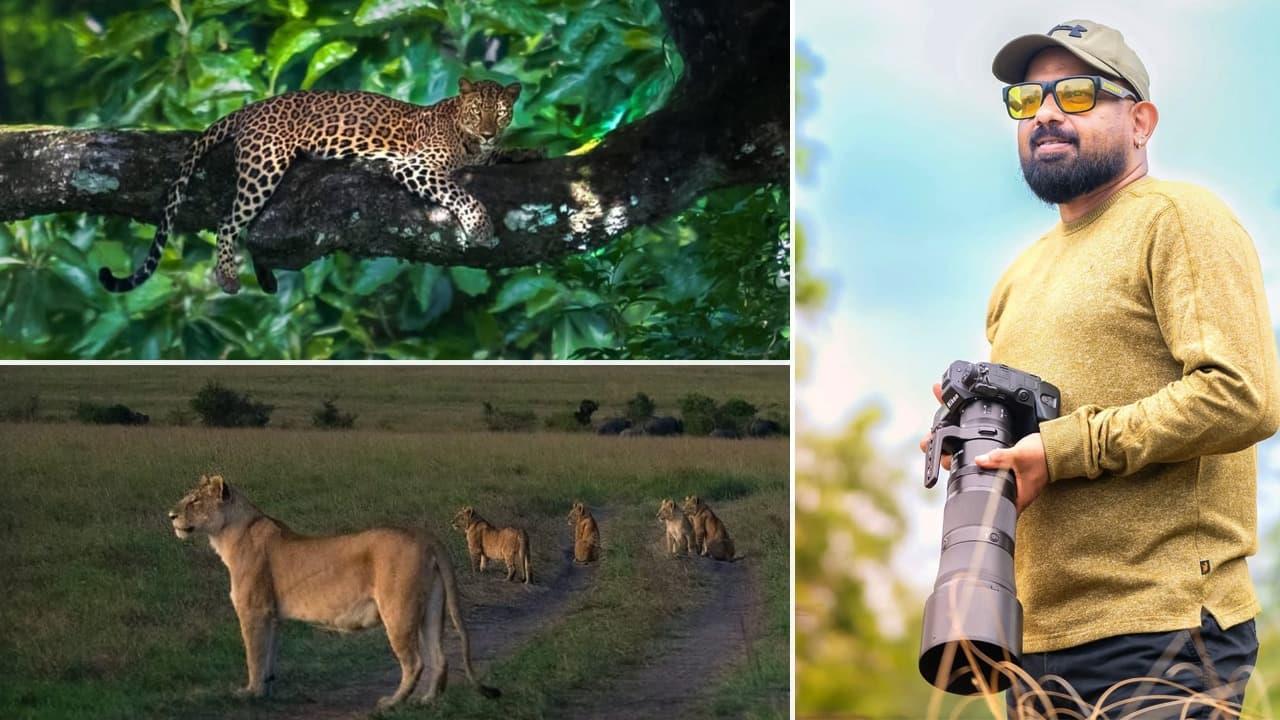
(Exclusive) Wildlife Photographer Subhash Nair Urges: Observe, Don't Interfere
In a world obsessed with instant content and viral reels, wildlife photographer Subhash Nair stands out for his unwavering commitment to ethics and empathy. Through his lens, nature isn't a backdrop for likes - it's a living, breathing entity that deserves respect. In this exclusive conversation, Nair opens up about the true essence of ethical wildlife photography, urging creators to observe without interference and to capture stories that honour, rather than exploit, their subjects.
He talks about the growing relevance of immersive, mindful travel, the discipline required to balance art with responsibility, and how his collaboration with JrnyOn is helping travellers discover deeper, more meaningful connections with the wild. From underrated Indian trails like Eaglenest and Valmiki to upcoming expeditions in Borneo and Tanzania, Nair's journeys are less about ticking destinations off a list - and more about rediscovering harmony with nature.
What does ethical wildlife photography mean to you, and why is it becoming increasingly important in today's world of fast content and social media?
Ethical wildlife photography, to me, is about respect for the subject, the habitat, and the story you are trying to tell. In an age of instant content, it's easy to forget that every image we share has an impact. Animals aren't models, they are part of delicate ecosystems. Ethical photography ensures we observe without interference.
Q: How can photographers and travellers strike a balance between capturing a striking image and ensuring they do not disturb the animal or its natural surroundings?
The balance comes from patience and empathy. If you approach photography with curiosity instead of conquest, you'll naturally keep your distance. Use longer lenses, avoid sudden movement or sound, and let the moment unfold. Often, the most powerful images happen when you wait, when nature forgets your presence and goes on as usual.
Q: What are some practical dos and don'ts you follow personally when shooting in the wild?
Do learn about animal behaviour before you shoot. It helps you predict patterns and avoid intrusion. Do respect park regulations and guides. Don't feed, bait, or provoke animals for a shot. Don't chase a subject if it turns away. And always remember: the photograph is a privilege, not a right.
Q: You've often spoken about immersive travel experiences. How do you define that, and why do you think more travellers are seeking deeper, slower, and more mindful journeys today?
Immersive travel is about presence, being part of the environment rather than passing through it. I think people are tired of collecting places and want to collect moments. The loneliness of modern life and the overload of digital media are making travellers crave slower, more connected experiences, ones that give meaning.
Q: Which destinations or trails, in your experience, offer the most authentic immersive wildlife experiences in India but remain under the radar?
Western Ghats in Kerala is on such place. Most areas are not open for tourism, but some areas. Other places I can think of are Eaglenest in Arunachal Pradesh, and Valmiki Tiger Reserve in Bihar remain underrated. These places have incredible biodiversity and fewer crowds, which makes encounters more natural and personal.
Q: Through your association with JrnyOn, how are you helping others discover ethical and immersive travel?
JrnyOn, for me, is a wonderful platform to collaborate and curate my journeys. Their team works closely with me and truly understands what my audience is looking for. This partnership allows me to focus on what matters most, sharing my knowledge, educating travellers, and deepening their connection with nature - while JrnyOn takes care of everything else, from bookings to logistics. With their support, I can now curate more journeys, reach a wider audience, and spend more time on the part I value most: helping people experience wildlife responsibly and meaningfully.
Q: You've also been mentoring young photographers and travellers-how do you guide them to develop a sense of responsibility and respect for the environment?
Always tell them, your camera is not a weapon, it's a window. Learn to observe before you shoot. I encourage young photographers to volunteer with conservation groups, spend time with local guides, and understand the science behind what they photograph. That grounding builds humility and responsibility.
Q: Could you tell us a bit about your upcoming trip with JrnyOn and what makes it special or different from a typical wildlife expedition?
Our upcoming journey is to Borneo this October, one of the most biodiverse regions on Earth. The island's unique wildlife, from orangutans to rare nocturnal species makes it a fascinating contrast to the big-cat landscapes many of us usually explore. It's an opportunity to highlight a different side of wildlife and conservation. Early next year, we're planning a Tanzania trip in January and a family-focused Kenya trip in May, bothdesigned to introduce children to wildlife, photography, and conservation at a young age.
Q: Finally, what is one piece of advice you would give to anyone hoping to explore wildlife photography and travel in a more meaningful, ethical way? Don't chase the image, chase understanding. Spend time observing, learning, and connecting. When you respect the wild, it rewards you with moments that no staged shot can match. In the end, a photograph should tell a story of coexistence.
Legal Disclaimer:
MENAFN provides the
information “as is” without warranty of any kind. We do not accept
any responsibility or liability for the accuracy, content, images,
videos, licenses, completeness, legality, or reliability of the information
contained in this article. If you have any complaints or copyright
issues related to this article, kindly contact the provider above.

















Comments
No comment